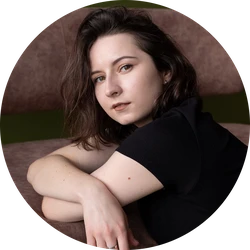First of all, you should exactly define what goals you are pursuing, when you decide to become a wedding photographer, and who a good wedding photographer really is. The fact is that even if you reach great heights in this area, it won’t guarantee that you will begin earning much money, will become very famous, or have a lot of customers. Experience shows that sometimes wedding photographers, who can hardly be called good ones, earn much money. While some other brilliant photographers get nothing for their job and work just for practice. The following article is designed especially for those who are crazy in love with photography and plan to become good wedding photographers not only for money or for popularity.
Things that you should photograph
Offer your customers to arrange a pre-wedding photo shoot. What for? On the one hand, you’ll be able to know them more closely and they get used to your style of work. This experience will help you during the main photo session because you will already know what perspective and poses should be avoided, and which of them, on the contrary, are the most advantageous for a bride and a groom. In addition, they will behave more naturally and stop feeling shy.

Constantly experiment and improve your skills. [©Jerry Ghionis](http://www.jerryghionis.com/)
Secondly, these pre-wedding pictures can serve as the source for a nice slide show that guests will watch during the ceremony. It will surely look very touching and memorable.
Moreover, if your clients have no prejudices, propose them to organize the photo session in wedding clothes beforehand. You will have plenty of time to make the required number of standard wedding shots. On the wedding day, there can be no enough time for them.
A wedding photo shoot traditionally includes several parts:
- bride’s and groom’s preparations for the happiest day in their lives
- the marriage ceremony
- a wedding walk
- holiday meal or banquet.
Useful tricks of a perfect wedding photographer
You should realize that wedding photographing is actually a very difficult process that requires you to demonstrate all your talents. A good wedding photographer combines skills of a portraitist and reporter. He knows how to work in both natural and artificial lighting. As a portraitist, you have to take beautiful close-up pictures, as a reporter – to take notice of interesting moments without interfering in what is happening during the ceremony, as a director – to lead a bride and her groom while they go for a wedding walk. Prepare to take pictures in bright sun as well as in low light or complex light patterns.
Tip: Study thoroughly the works of wedding photography maestros, such as Joe Buissink, Jerry Ghionis or others. Look how they compose photos, work with lightening or unfold the subject. Do not be afraid to copy professional works at the beginning of your career, and then over time, you’ll be able to develop your own style.

The arsenal of a true wedding photographer
Complex tasks require the circumspect ways to solve them. A wedding photographer needs the appropriate equipment that he can rely on anytime. So, please forget about pseudo SLR cameras. The minimum set of a good wedding photographer should include:
- Two advanced single-lens reflex cameras. They are necessary in order not to waste time for changing lenses. It is especially important at a crucial moment, when for example the main camera suddenly stops working correctly. Extra charged batteries also won’t be superfluous.
- Lenses. You may already know that the lenses with fixed focal lengths differ from zooms in better picture quality. That’s why most photographers prefer to work with them. You will need at least three lenses (24 mm, 50 mm and 85 mm). It will be better if they have high-luminosity (with diaphragm values of 1.2, 1.4, 1.8, 2.8 max). The 24 mm lens is perfect to capture overall plans, to take photos of many people in small rooms or make group portraits. The 50 mm lens serves as a universal tool: it can photograph almost everything from preparations till the ceremony. The 85 mm lens is needed in order to do portraits. If you do not like to change lenses many times and you prefer zooms, than choose a small-aperture optical zoom (no more than 3).
- Accessories. Additional lightening and flashes are mainly used for photo sessions in dark rooms. They can be useful in any situation where the natural light is not bright enough, or you do not want to raise the ISO. A reflector is effective for making portraits. Note that a small reflector may be simply useless for wedding images, so it is better to choose a big one (not less than 100 cm). You can restrict yourself to a soft gold one, or you can purchase a “3 in 1” that is very convenient to lighten shades.
So this is it, our list is complete. Perhaps soon you will want to enlarge your arsenal with a fisheye, Lensbaby, tilt-shift or macro lens. Once you understand that your equipment is not enough to realize your creative ideas then immediately find new tools.
We hope that our recommendations will help you to become a good wedding photographer, but always remember that the only real way to improve your skills is to practice. And do not forget about watermarking of your photos! Here is how to do it - How to put a watermark on a photo.
 Visual Watermark
Visual Watermark by
by 